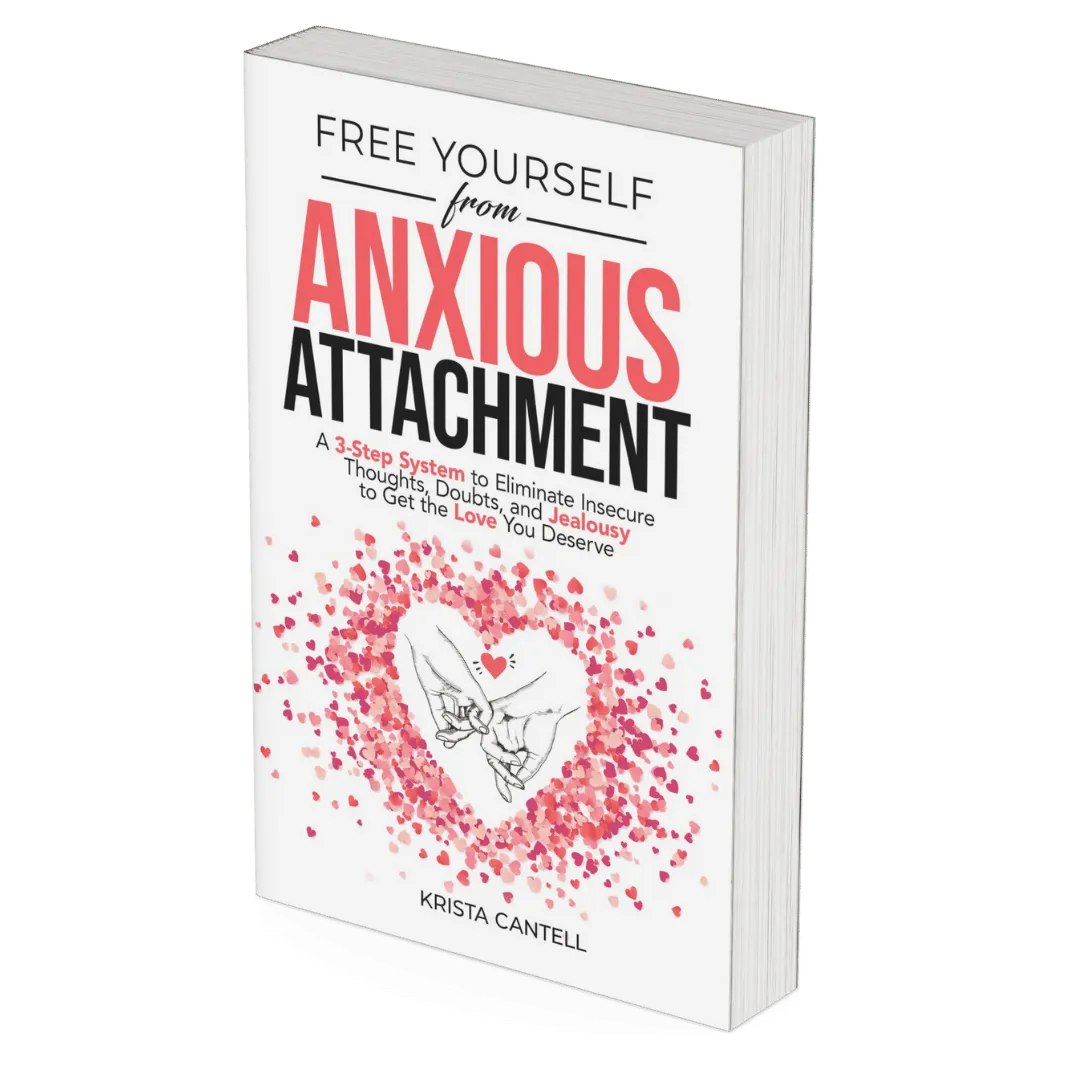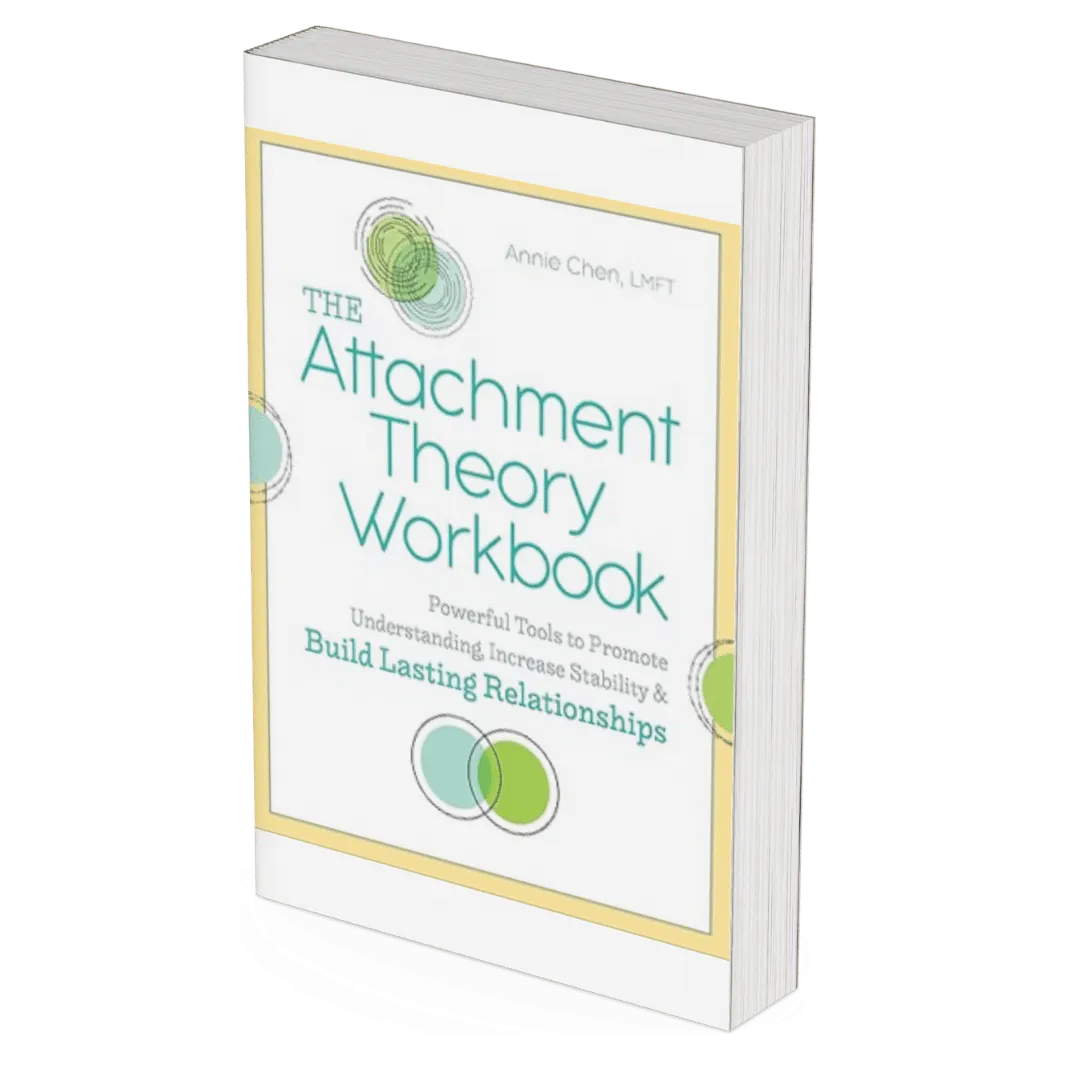Books About
Attachment Theory
Dive into our carefully curated selection of transformative books, enriching courses, and expert therapist recommendations, all designed to empower you with the knowledge and tools to build deeper, more fulfilling connections. Whether you're seeking to understand your relationship patterns, improve communication with your partner, or simply enrich your personal growth journey, Attachment Theory Books is here to light the way. Start your journey towards stronger, healthier relationships today!
Featured Books This Month

Free Yourself from Anxious Attachment

Loving an Avoidant Partner

Breakup and Bounce Back

Breakup and Bounce Back

Loving an Avoidant Partner
Want to List Your Book Here?
Are you an author or publisher with a book that delves into the nuances of relationships or attachment styles? If you believe your work can enlighten and guide others on their journey to healthier, more secure relationships, we would love to consider it for inclusion in our esteemed directory.
Our website serves as a beacon for those seeking to deepen their understanding of attachment theory and its profound impact on relationships. By featuring your book, you'll be contributing to a valuable resource that empowers readers worldwide.

Attachment Theory Blog

Why Attachment Theory is Gaining Popularity: Exploring its Benefits and Applications
Attachment theory has become increasingly popular in recent years, with many people turning to it as a way to understand their relationships with others. But what is attachment theory, and why is it becoming so popular?

At its core, attachment theory is a psychological, evolutionary, and ethological theory that concerns the relationships between humans. It posits that early experiences with caregivers can shape a person's later relationships and attachment style. The theory was first developed by British psychologist John Bowlby in the 1950s and 1960s, and since then, it has been expanded upon and refined by many other researchers.
So why is attachment theory becoming so popular now? One reason is that it offers a way to understand the complex dynamics of human relationships. As people become more aware of the importance of mental health and emotional well-being, they are turning to attachment theory as a framework for understanding their own behaviors and those of others. Additionally, the rise of social media and online communication has made it easier for people to access information about attachment theory and share their experiences with others.
Historical Context of Attachment Theory
Origins and Development
Attachment theory is a psychological, evolutionary, and ethological theory that provides a descriptive and explanatory framework for understanding interpersonal relationships between human beings. The theory originated in the work of British psychoanalyst John Bowlby in the 1950s and 1960s, and has since been developed and expanded by numerous researchers and theorists.
John Bowlby's Contribution
John Bowlby was interested in the effects of early separation and loss on children's emotional development. He believed that children are biologically predisposed to form attachments to their primary caregivers, and that these attachments serve as a secure base from which the child can explore the world. Bowlby's work emphasized the importance of the quality of the attachment relationship, and he argued that disruptions in this relationship can have long-lasting effects on the child's emotional and social development.
Mary Ainsworth's Strange Situation
Mary Ainsworth was a student of Bowlby's who is perhaps best known for developing the Strange Situation, a laboratory procedure for assessing infant attachment. In the Strange Situation, infants are observed in a series of brief separations and reunions with their caregivers, and their behavior is classified into one of four attachment styles: secure, insecure-avoidant, insecure-resistant, and disorganized. Ainsworth's work helped to further refine and validate Bowlby's ideas about attachment, and her classification system has been widely used in research on attachment.
Core Principles of Attachment Theory
Attachment theory is a psychological framework that explains how people form emotional bonds and relationships with others. At its core, attachment theory is based on the idea that early experiences with caregivers shape the way individuals approach relationships throughout their lives. Here are some of the core principles of attachment theory:
Attachment Styles
Attachment theory proposes that individuals develop one of four attachment styles based on their early experiences with caregivers: secure, anxious-ambivalent, avoidant, and disorganized. Individuals with a secure attachment style tend to feel comfortable with intimacy and are able to trust others easily. Those with an anxious-ambivalent attachment style may be overly preoccupied with their relationships and may seek constant reassurance from their partners. Those with an avoidant attachment style may be uncomfortable with intimacy and may avoid close relationships altogether. Finally, individuals with a disorganized attachment style may have experienced abuse or neglect as children and may have difficulty regulating their emotions and behaviors in relationships.
Internal Working Models
Attachment theory also proposes that individuals develop internal working models based on their early experiences with caregivers. These models are mental representations of the self, others, and relationships, and they shape the way individuals perceive and respond to social situations throughout their lives. For example, individuals with a secure attachment style may develop a positive internal working model, in which they perceive themselves as lovable and capable of forming healthy relationships with others. On the other hand, individuals with an avoidant attachment style may develop a negative internal working model, in which they perceive themselves as unworthy of love and unable to form close relationships with others.
In summary, attachment theory provides a framework for understanding how early experiences with caregivers shape the way individuals approach relationships throughout their lives. By identifying different attachment styles and internal working models, attachment theory can help individuals develop a deeper understanding of themselves and their relationships with others.
Rising Popularity of Attachment Theory in Modern Psychology
Attachment theory has gained significant attention in recent years and has become increasingly popular among psychologists, therapists, and counselors. This theory, which originated in the 1950s, has seen a resurgence in interest due to its relevance to modern-day relationships and the evolving understanding of mental health.
Recent Research Findings on Attachment
Recent studies have shown that attachment theory provides a framework for understanding human behavior and relationships. According to a recent article published in the journal Attachment & Human Development, attachment theory has helped researchers to understand the importance of early childhood experiences in shaping adult relationships.
Furthermore, attachment theory has been found to be useful in understanding the impact of trauma on individuals. A study published in the Journal of Trauma & Dissociation found that attachment theory can help clinicians to understand the effects of trauma on attachment styles and how to effectively treat trauma-related disorders.
Influence on Therapy and Counseling
Attachment theory has also had a significant impact on therapy and counseling. Therapists and counselors are increasingly using attachment theory as a tool to help clients understand their own attachment styles and how they impact their relationships.
Attachment-based therapies, such as Emotionally Focused Therapy (EFT), have been developed to help couples improve their relationships by addressing attachment issues. EFT has been found to be effective in treating couples with relationship distress, with research showing that it can improve relationship satisfaction and decrease symptoms of depression and anxiety.
Overall, the rising popularity of attachment theory can be attributed to its relevance to modern-day relationships and mental health. Its usefulness in understanding human behavior and relationships, as well as its impact on therapy and counseling, has made it an important area of study in modern psychology.
Attachment Theory in Popular Media
Attachment theory has become increasingly popular in recent years, and this can be seen in the media. Books, publications, and online platforms have all contributed to the spread of attachment theory and its concepts.
Attachment Theory Books and Publications
One of the most well-known books on attachment theory is "Attached: The New Science of Adult Attachment and How It Can Help You Find—and Keep—Love" by Amir Levine and Rachel Heller. This book has been a bestseller and has helped to popularize attachment theory among the general public. It explains the different attachment styles, how they affect relationships, and provides practical advice on how to improve relationships.
Other publications, such as academic journals and popular magazines, have also contributed to the spread of attachment theory. For example, an article in The Conversation discusses what people get wrong about attachment theory and how it is often misunderstood in popular culture [1].
Online Platforms and Social Media
Online platforms and social media have also played a significant role in the popularity of attachment theory. The rise of social media has made it easier for people to access information on attachment theory and to connect with others who share similar experiences.
For example, Dr. Amir Levine, the co-author of "Attached," has a strong social media presence and regularly posts about attachment theory on his Instagram account. This has helped to raise awareness of attachment theory and its concepts among his followers.
In addition, there are many online communities and forums dedicated to attachment theory, where people can discuss their experiences and seek advice from others. These communities have helped to create a sense of belonging and support for those who are interested in attachment theory.
Overall, attachment theory has become increasingly popular in the media, with books, publications, and online platforms all contributing to its spread. As more people become aware of attachment theory and its concepts, it is likely that its popularity will continue to grow.
Critiques and Controversies
Despite its popularity, Attachment Theory has also faced criticisms and controversies. In this section, we will discuss some of the debates and evidence that have challenged the universality of Attachment Theory.
Debates on Universality
One of the main debates surrounding Attachment Theory is whether its principles apply universally across cultures. While the theory was initially developed based on observations of Western infants and mothers, some researchers argue that the theory may not be applicable to non-Western cultures.
For example, some studies have found that in collectivist cultures, where interdependence and social harmony are emphasized, children may be more likely to develop a sense of security through attachment to multiple caregivers, such as grandparents or other extended family members, rather than just the mother. This challenges the idea that attachment is solely based on the mother-child relationship.
Evidence of Cultural Bias
Another critique of Attachment Theory is that it may be biased towards Western cultural values and norms. Some researchers argue that the theory prioritizes independence and autonomy, which are highly valued in Western cultures, over interdependence and social harmony, which are emphasized in non-Western cultures.
Additionally, some studies have found that the Strange Situation procedure, which is commonly used to assess attachment styles, may not be culturally appropriate for non-Western children. For example, in some cultures, it may be considered inappropriate for a child to be left alone with a stranger, which could affect their behavior during the procedure.
Overall, while Attachment Theory has gained widespread popularity, it is important to acknowledge the debates and controversies surrounding its universality and cultural bias. As researchers continue to explore these issues, we may gain a better understanding of how attachment develops across different cultures and contexts.
Attachment Theory in Relationships
Attachment theory has become increasingly popular in recent years due to its ability to explain the dynamics of human relationships. This theory suggests that the quality of early relationships in life, particularly with primary caregivers, has a significant impact on an individual's ability to form and maintain relationships throughout their life.
Adult Romantic Relationships
Attachment theory proposes that an individual's attachment style, which is formed in early childhood, influences their behavior in adult romantic relationships. For example, individuals with a secure attachment style tend to have trusting, supportive, and satisfying romantic relationships, while those with an insecure attachment style may struggle with intimacy, trust, and emotional regulation.
Research has shown that attachment styles can affect various aspects of romantic relationships, such as communication, conflict resolution, and sexual satisfaction. Understanding one's attachment style and that of their partner can help improve relationship satisfaction and reduce conflict.
Friendships and Social Bonds
Attachment theory not only applies to romantic relationships but also to friendships and social bonds. The quality of early relationships can affect an individual's ability to form and maintain friendships, as well as their overall social competence.
Individuals with a secure attachment style tend to have more positive and stable friendships, while those with an insecure attachment style may struggle with social anxiety, loneliness, and difficulty forming close relationships.
Overall, attachment theory has become popular due to its ability to explain the dynamics of human relationships, including adult romantic relationships, friendships, and social bonds. Understanding one's attachment style can help improve relationship satisfaction and overall social competence.
Overall, the future of Attachment Theory research is promising, with potential for continued growth and development. By utilizing integrative approaches and technological advancements, we can deepen our understanding of attachment processes and their impact on human development and relationships.







